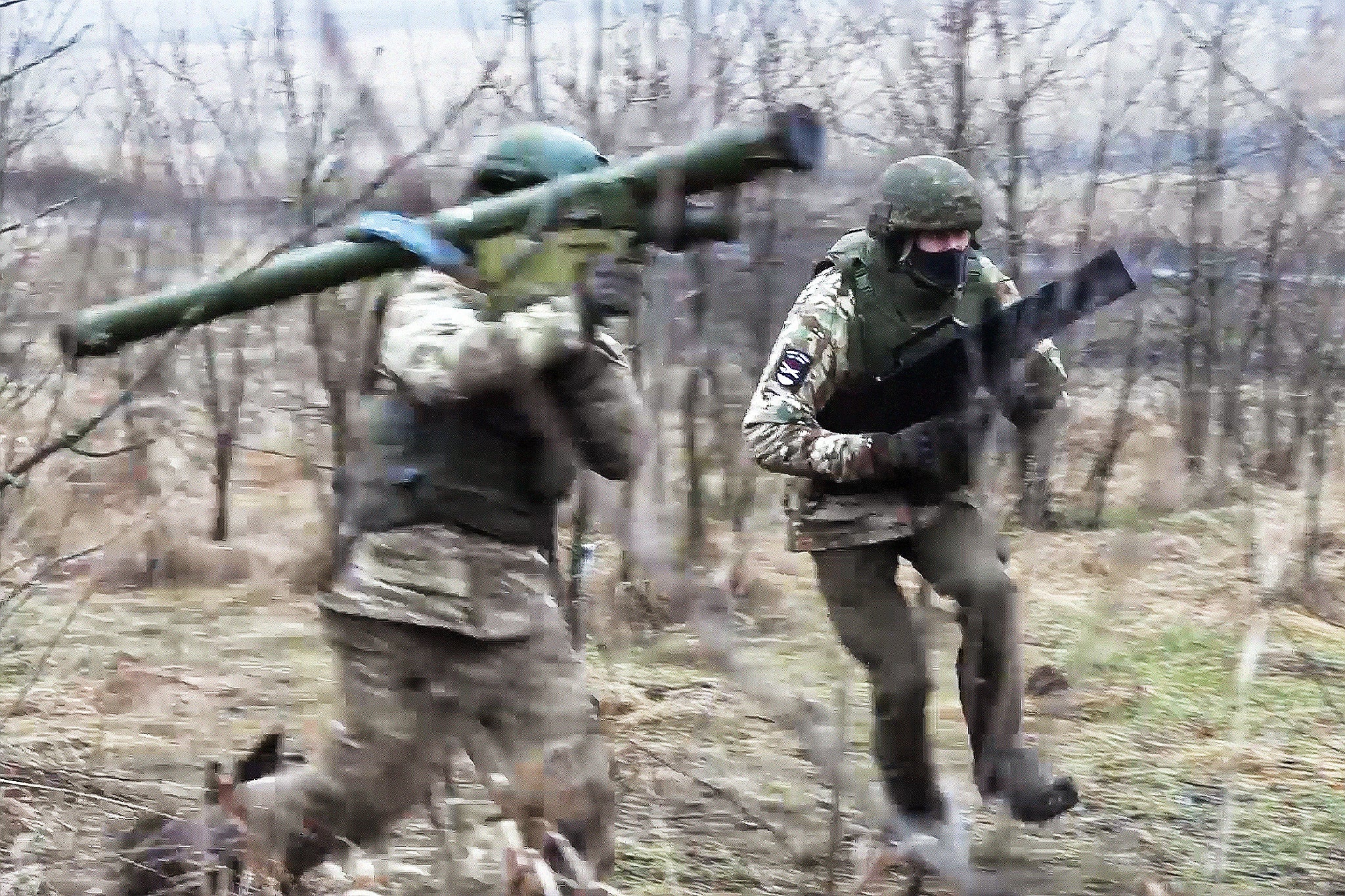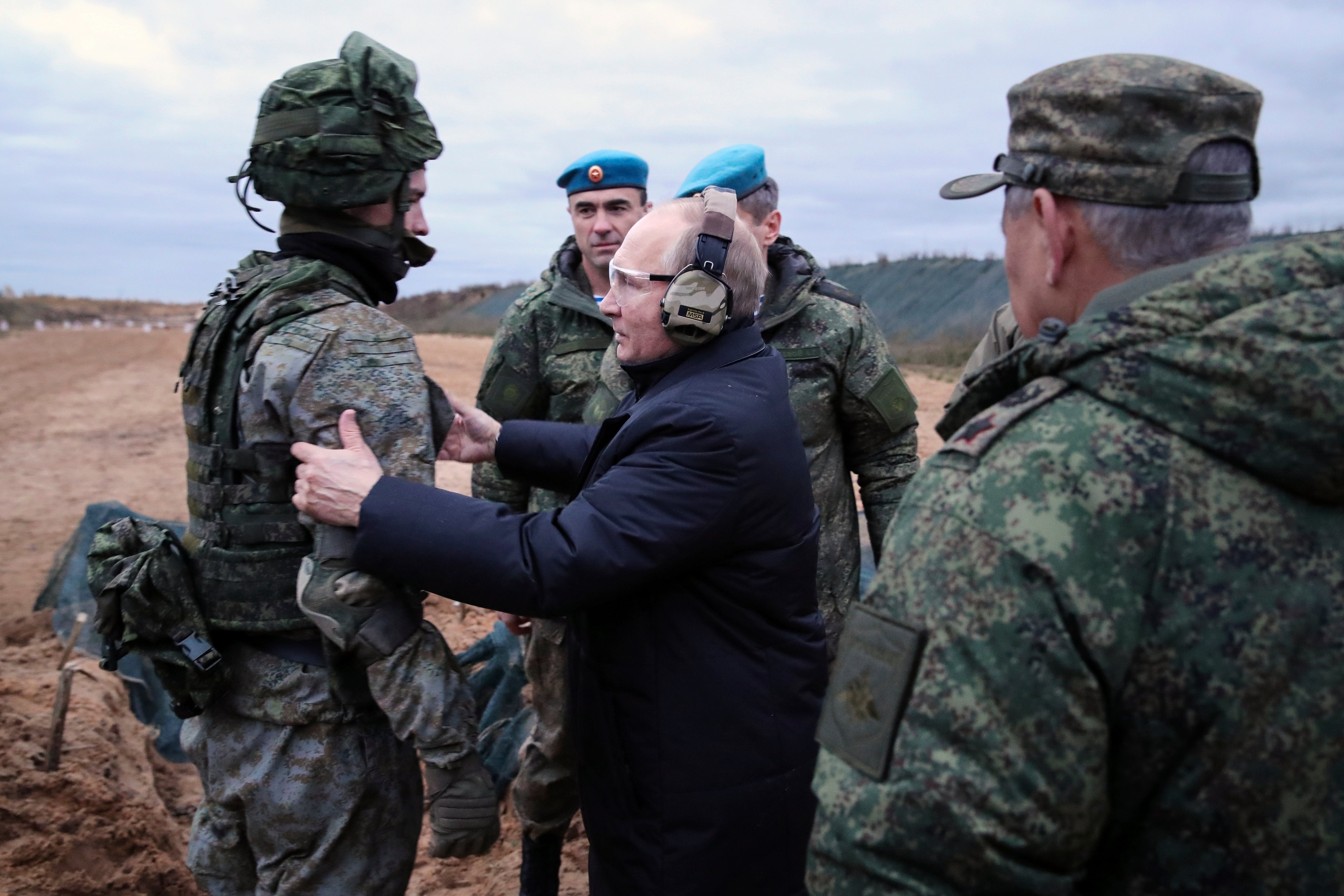Russian soldier death toll hits 50,000 in Putin’s ‘meat grinder’ war with Ukraine
Number of deaths nearly 25% higher last year than in the first 12 months of the war, new analysis says
Your support helps us to tell the story
From reproductive rights to climate change to Big Tech, The Independent is on the ground when the story is developing. Whether it's investigating the financials of Elon Musk's pro-Trump PAC or producing our latest documentary, 'The A Word', which shines a light on the American women fighting for reproductive rights, we know how important it is to parse out the facts from the messaging.
At such a critical moment in US history, we need reporters on the ground. Your donation allows us to keep sending journalists to speak to both sides of the story.
The Independent is trusted by Americans across the entire political spectrum. And unlike many other quality news outlets, we choose not to lock Americans out of our reporting and analysis with paywalls. We believe quality journalism should be available to everyone, paid for by those who can afford it.
Your support makes all the difference.More than 50,000 Russian soldiers have been killed in Ukraine since the Kremlin invaded its neighbour more than two years ago, new analysis says.
The number of deaths was nearly 25 per cent higher last year than in the first 12 months of the war, according to the BBC. The broadcaster used graves, open-source information from official reports, newspapers and social media to confirm the deaths.
Some 27,300 Russian soldiers died in the second year of the conflict as Moscow pursued its so-called meat grinder strategy of sending waves of cannon fodder troops to the front line to try to wear down Ukraine forces and expose their locations.

The true number of deaths is likely to be much higher, the BBC said, because the analysis did not include the deaths of militia in Russian-occupied Donetsk and Luhansk - in eastern Ukraine.
BBC Russia, independent media group Mediazona and volunteers have been counting deaths since the war broke out in February 2022.
The death toll is eight times higher than the only official public acknowledgment of fatalities ever given by Moscow in September 2022. Moscow declined to comment to the report.
The size of Russia’s losses illustrates how territorial gains - often minimal - come at a massive human cost.
The Institute for the Study of War said Russia had used “ineffective human-wave style frontal assaults” in the battle for Vuhledar.
“Challenging terrain, a lack of combat power, and failure to surprise Ukrainian forces", the war research group added, had led to few gains and large losses on the battlefield.

Other estimates have put the number of Russian fatalities in the war much higher.
Earlier this week the general staff of Ukraine’s Armed Forces put the number of Russian troop losses at 453,650.
According to the report, Moscow has also lost 7,174 tanks, 13,765 armored fighting vehicles, 15,459 vehicles and fuel tanks, 11,552 artillery systems, 1,046 multiple launch rocket systems, 758 air defense systems, 347 airplanes, 325 helicopters, 9,235 drones, 26 ships and boats, and one submarine.
A US intelligence report in December last year put the number at about 315,000, representing 87 per cent of Russia’s roughly 360,000 pre-war troop numbers.

Join our commenting forum
Join thought-provoking conversations, follow other Independent readers and see their replies
Comments